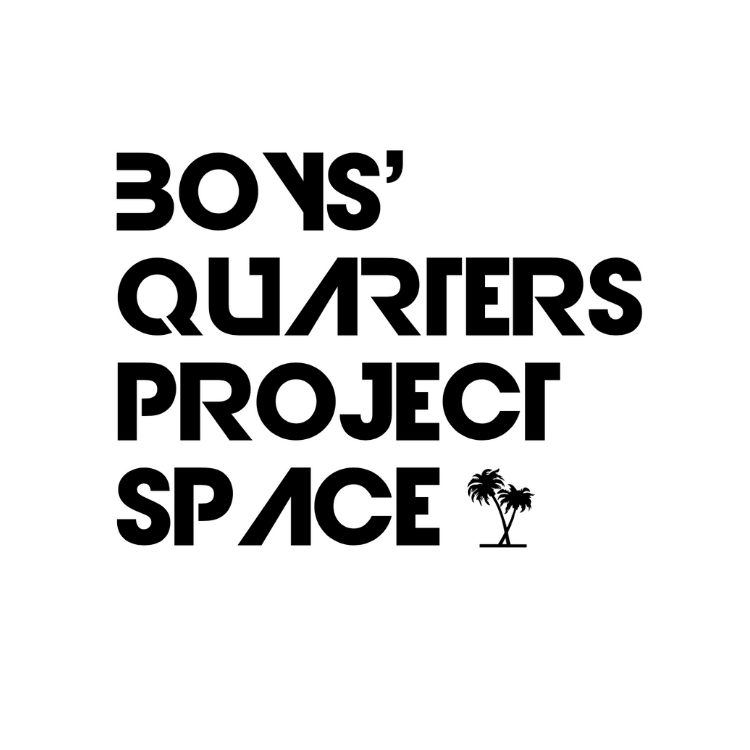THEY CALL THIS PLACE COLOMBIA:
SAND PAINTINGS BY CHARLES UDOFIA
Curated by Zina Saro-Wiwa
Boys’ Quarters Project Space is pleased to present “They Call This Place Colombia“, a solo exhibition of new paintings by Charles Udofia. Udofia is an “outsider” artist who works as a printer/electrician/knife sharpener by day but relentlessly produces portraits – made by meticulously pouring sand on plywood – whenever he is not plying his trades. Known in his neighbourhood for his large sand paintings (some as tall as 20 feet) depicting the likes of Nelson Mandela, Michael Jackson, the Mona Lisa and political leaders, for Boys’ Quarters he has created works that capture and elevate ordinary working people that live and work in the streets around the gallery. Boys’ Quarters is located in the oldest part of Port Harcourt and is where the city began its life. For many years the area has been known for being noisy, boisterous and a little dangerous. But in the last 15 years its reputation darkened and became notorious for gun violence, drug dealers and prostitution, particularly at night. Locals began to nickname the area “Colombia” in reference to popular movies and news reports that cover the drug trade in the South American country in the 80s, 90s and 00s. Udofia’s works use sand found around the city to redraw the relationship between place and self. Using the landscape to describe and inscribe personal histories and emotions and committing it back into the environment.
Charles Udofia is no ordinary street artist. Like those that sell their wares on the street, he is not formally-trained and he does not have a dedicated studio. He works out of a shop located behind the grocery store operated by his cousin. But his technique, his excellent draughtsman skills and the limits he imposes on himself stylistically distinguish him from those that peddle weather-beaten canvases depicting crudely-drawn famous faces. Udofia does not colour the sand that he meticulously pours into representative forms. Instead, he finds the palettes he needs in his surroundings, and leaves viewers wondering how they might have missed that sand can exist in such a range. “He’s always looking. So he sees what we don’t,” remarks gallery director Zina Saro-Wiwa, as she recently described the artist’s practice. The artist’s work becomes about the internalization of what is seen. The shades of sand that compose each of his images emphasize seeing in an everyday environment that which might otherwise go unnoticed. Seeing is a choice.
Udofia’s new works for Boys’ Quarters earnestly showcase everyday people: the aspiring musician, a retiring salesman, an Ankara-clad food seller, to name a few. Comparable to those depicted in Ade Adekola’s photography series, Icons of a Metropolis, Udofia’s featured subjects become caricatures to be remembered. Each of these two-dimensional works end below the chest and thereby connect to a tradition of commissioned busts that are often created for esteemed individuals. Thus, this format, coupled with Udofia’s selected subjects, challenge assumptions of who is deemed worthy of representation and how people are seen, evaluated and appreciated. When considering Udofia’s portrayals, one might weigh their realities against popular culture and the excessive presence of celebrities and, in the case of Nigeria, political leaders. What significance is drawn from those who defy odds of contemporary existence in nearly every neighborhood on any given day? These questions rise on viewing his renderings which are emotive, meticulously-crafted objects that masterfully capture the way light plays on the subjects’ faces. Udofia’s portraits express an unexpected wistfulness that moves us beyond the artist’s knack for verisimilitude. They tenderly highlight the tenacity but also the vulnerability of ordinary people that move and operate in the fraught space of “Colombia” with such dignity and resigned faith.
The exhibition also features photographic portraiture by Dumnwii Fadeh, a Boys’ Quarters-trained photographer who captured the subjects inside the gallery and alongside their sand portraits in the streets where they live and work.


